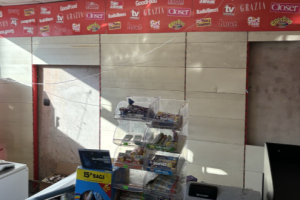The latest BRC-LDC Vacancy Monitor shows store vacancies increased to 14.1% in the first quarter of the year, up from 13.7% in the fourth quarter of 2020. This marks three years of increasing vacancy rates, from the first quarter of 2018, the research reveals.
All locations saw an increase in vacancies in the fourth quarter, with shopping centre vacancies increasing to 18.4% in the first quarter of the year, from 17.1% in the fourth quarter.
High Street vacancies increased to 14.1% in the first quarter of the year, up from 13.7% in the fourth quarter of 2020, remaining in line with the overall rate.
Helen Dickinson, chief executive of the British Retail Consortium, said: “After a third national lockdown, it is no surprise that the vacancy rate has continued to soar. The forced closure of thousands of shops during the first quarter of 2021 has exacerbated already difficult conditions for the retail industry.
“We estimate there are around 5,000 fewer stores since the start of the pandemic, meaning 1 in 7 shops now lie empty. There is significant regional disparity in vacancies, with the North of England showing a greater increase compared with other parts of the country. Shopping centres, many of which have been forced to close for a large portion of this pandemic, have fared worse than other retail locations, with over 12% of units lying empty for a year or more.”
Lucy Stainton, director at Local Data Company, said: “The number of vacant units has continued to increase in the first three months of this year across the country, despite much of the market being temporarily closed for during the 3rd lockdown. With this in mind, and despite these percentages increasing significantly, we would argue that we have not yet seen the true impact of this third lockdown and this will only be obvious once the market has had the chance to re-open fully. We have seen a number of household names announcing further store closures or indeed, disappearing from our high streets entirely showing how challenged physical retail continues to be.”
Stainton added: “This being said, the early indications from the first few weeks of the ‘unlocking’ have shown there is still significant demand for physical retail and eating out. Hopefully, as consumer confidence continues to build momentum with reduced covid-19 cases, more of the population vaccinated and warmer weather, further fall out from the pandemic might be mitigated somewhat. Similarly we are seeing a lot of redevelopment with retail stores being converted to other uses such as office space and residential property – this too may help stabilise the increase in vacancy we’d otherwise expect to see continue into the second quarter.”
Retail trade union Usdaw has expressed deep concern about the latest BRC-LDC shop vacancy monitor. General secretary, Paddy Lillis, said: “The UK retail sector has been impacted by the coronavirus pandemic on an unprecedented scale, as seen in today’s deeply concerning shop vacancy rates. For an industry already facing significant challenges, the long-term impact will be severe.
“The coronavirus pandemic has pushed many retailers and retail workers to breaking point, so government action needs to be equally significant. Usdaw is calling for an urgent retail recovery plan that provides necessary support for the retail industry.”
 Talking Retail Grocery and product news for independent retailers
Talking Retail Grocery and product news for independent retailers






